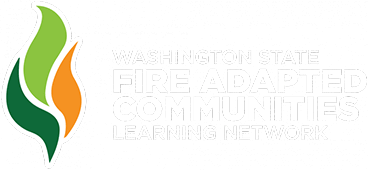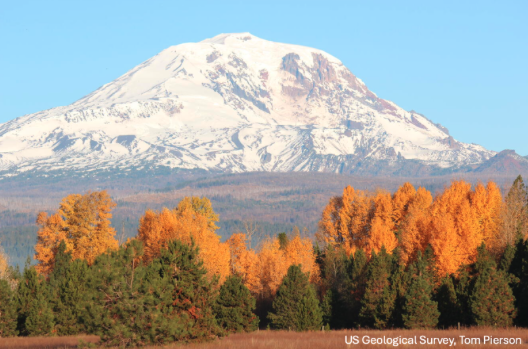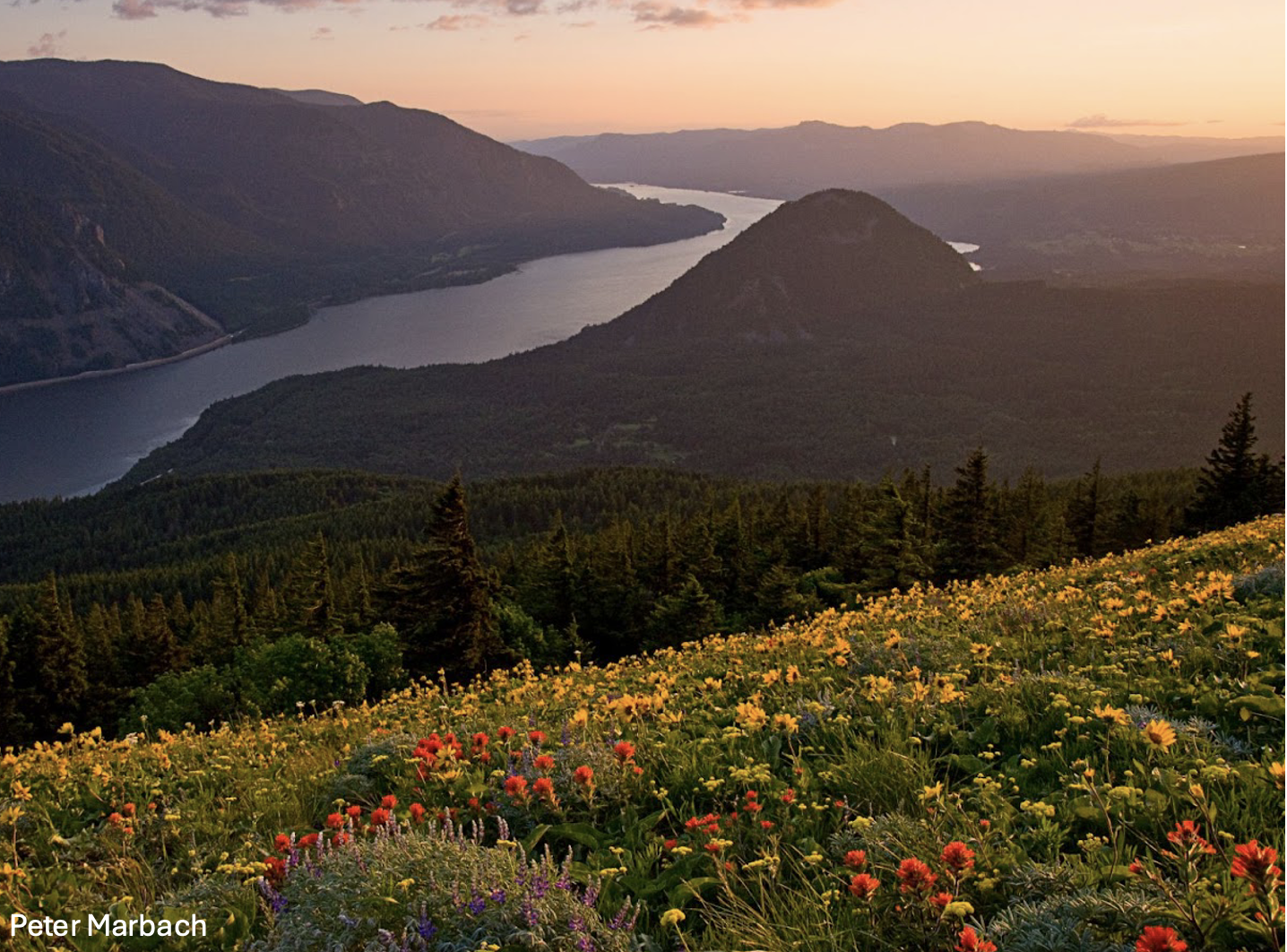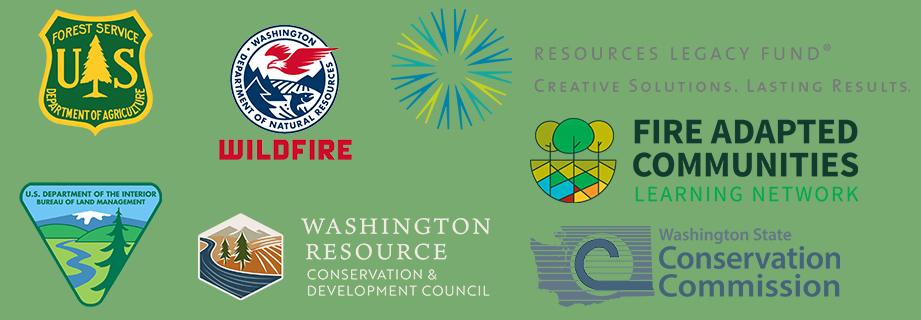WAFAC sat down with three staff from Cascadia Conservation District, a WAFAC member since 2015. Their outreach efforts span a wide range of audiences across Chelan County in central Washington. With the launch of the interactive Social Media Toolkit, we wanted to get their perspective on what works for them when it comes to social media.

WAFAC: Let’s start with you each introducing yourselves and what you do at Cascadia CD.
Kirk: I’m Kirk Beckendorf and I’m an environmental educator. I work with Amanda to lead our Kids in Creek and Kids in the Forest programs, along with afterschool programs and Wheat Week in-classroom programs in the spring. Mainly we’re trying to get kids outdoors.
Amanda: I’m Amanda Newell, Education and Outreach Specialist. In addition to the programs that Kirk mentioned, I put out a quarterly newsletter, manage our website, manage the social media page with Kirk’s help, and attend community events like fairs and farmers markets. I also work with our technical staff to create outreach publications, brochures and mailings.
Patrick:
I’m Patrick Haggerty, Forestry Program Manager. I work on our wildfire resilience and community resilience programs, mostly with private landowners and also with adjoining land managers to create more fire adapted communities.
WAFAC: Let’s dive into the social media landscape. In the new toolkit, Step One is to know your organization. If Cascadia CD was a person, how would you describe their personality?
Kirk: Collaborative and wanting to work with others who are interested in natural ecosystems and conserving those ecosystems. So, kind of a socially conscious individual.
WAFAC: What are some core values that make Cascadia CD unique from other environmental organizations in your area?
Amanda: I think that the collaborative approach that Cascadia takes is unique. One of the things that I’ve always loved so much about working here is all the different partner organizations that we work closely with; also, internally we all communicate a lot and help each other with various projects and programs. Having a local feel and being helpful and approachable are also key values for us. Even if we don’t have a program that fits someone’s situation perfectly, we’re going to work to connect them with partners to try to get them some answers.
WAFAC: Step Two of the guide is to know your audience and purpose. How do you handle this given that Cascadia CD serves a lot of different audiences?
Amanda: We post a variety of different topics. So rather than a blanket post like “hey, contact us because we have natural resource conservation programs for you”, we’ll have separate posts about forestry, or water quality, or education. That way if someone looks at Facebook they’re likely to see something that does apply to them and leads them to interact with us.
Kirk: I actually put who the audience is in the first line; for example, this morning I wrote a post that said TEACHERS in all caps to have it stand out a bit from all our other posts. I focus a lot on professional development and unique learning opportunities because that is a need for teachers. Today’s post was about a live feed from the South Pole that teachers can sign up to watch. I also try to post things that are free since school budgets are usually pretty limited. I spend a fair amount of time monitoring other sources so that I can share the really good stuff.
WAFAC: Patrick, what does the audience that you work with say about social media and how they use it to get information?
Patrick: I hear about it a lot during fire events. In Chelan County, our Emergency Management uses it exclusively to provide real time updates. So Facebook’s really the only place to go to get the most current information. In our day to day work, people will mention hearing about a specific story that got shared widely, which led them to give us a call. Certainly people are using it plenty; I’ve been out on site visits where everyone’s talking about the bear activity or what-have-you that they heard about on Facebook.

WAFAC: Step Three of the guide is to know your channels and content. How did you decide which channels to use and are you looking to expand to any of the other channels on social media?
Amanda: The website, Facebook, and YouTube have been the directions that we’ve gone because it’s what our staff are comfortable with and know how to manage. At this point we don’t have the capacity to be managing other social media. Facebook has the option to automatically post on Instagram, and if more channels had something like that, I think we could have more presence on other platforms. We use YouTube for educational videos like our Conservation News Minute. It’s great to have as much visual content as possible; we were able to do more when we had a staff member that was really into video editing.
One of our long-term goals is to have more bilingual content on social media. We share posts from Team Naturaleza and Wenatchee CAFE, who often have bilingual posts, but usually, our content is just in English.
WAFAC: I noticed that Cascadia shares a lot of content from other organizations. How do you decide what to share?
Amanda: A lot of times it’s content from partners that we work with quite a bit, that we know and trust. We’ll also share topics that apply to Chelan County residents. Where we struggle a bit is sharing partner programs that charge fees; typically if it’s a workshop that aligns with our mission, I’ll share even if they’re charging for it, whereas if it’s less directly related to the type of work that Cascadia does, I won’t share it. It’s a post-by-post decision.
WAFAC: The final step of the social media toolkit is to know what’s working, what’s not, and adapt. How do you use the built-in analytics for Facebook?
Amanda: We know that we get the most hits when it’s a personal story that a landowner contributed, or when there’s a bunch of cute pictures of kids out in the forest on one of education programs, or when we announce a new program. So I go through and monitor [the analytics] both out of curiosity, but also because we have certain grants with social media posts as deliverables. When that’s the case, I’ll monitor the hits and shares and take a screenshot for the grant report.
WAFAC: To wrap up our conversation, what advice do you have for other WAFAC members regarding social media?
Kirk: Start with the big picture of the goal of putting things on social media. What are you trying to get across? And who are you trying to get across to? You need to actually know that, and not just put stuff out there.
Amanda: Keep things as personal as possible. For example, having landowners being part of the post versus it being something that a staff member wrote. I think people really respond to that kind of neighbor to neighbor [approach].
Patrick: Intentionally build it into somebody’s job description, not just as “other duties as assigned”. Include it as part of your budgeting, and give yourself plenty of budget to be able to actually do it. Just be careful about committing yourself to too many deliverables!
Many thanks to Amanda, Kirk, and Patrick for their time and insights into social media. To learn more about Cascadia Conservation District, visit their website at www.cascadiacd.org or check out their Facebook page!






